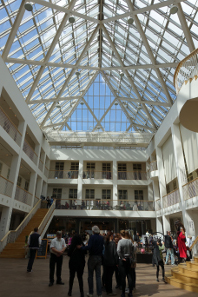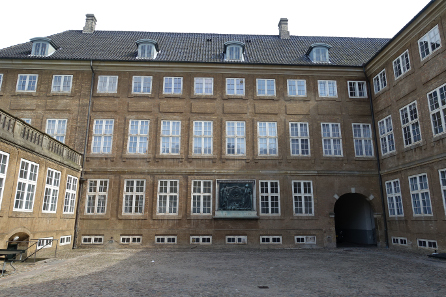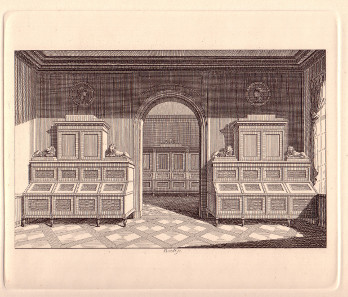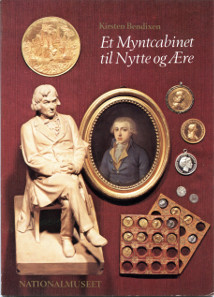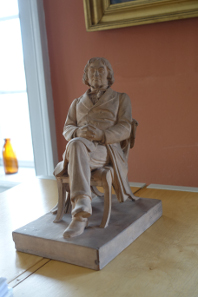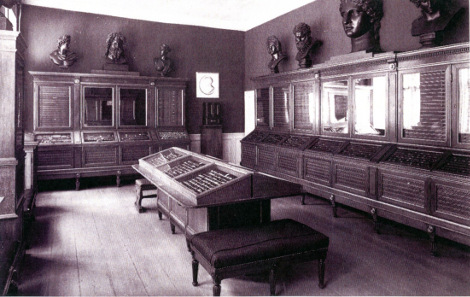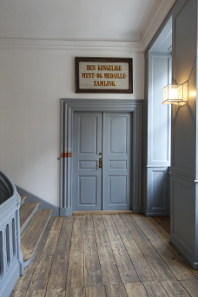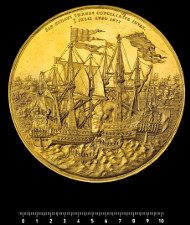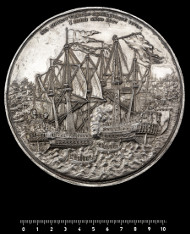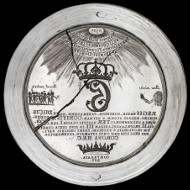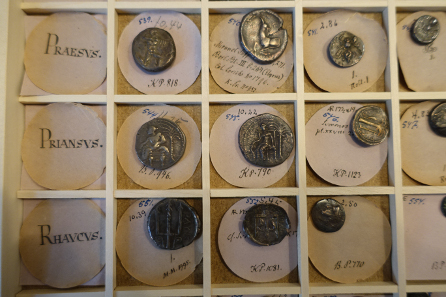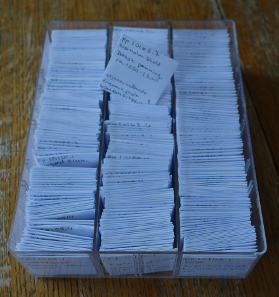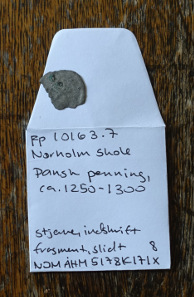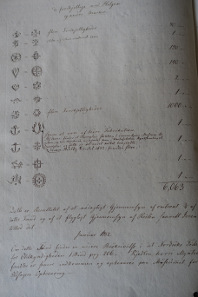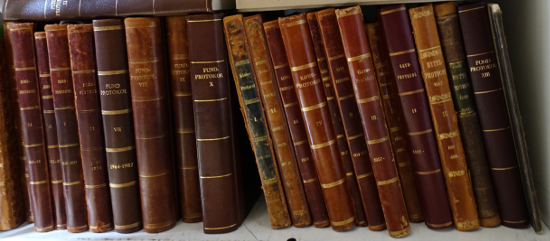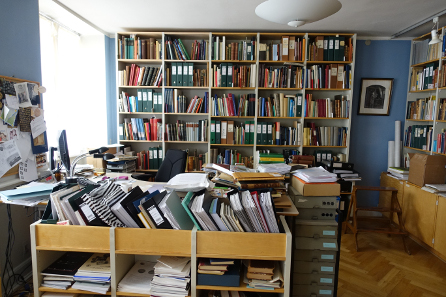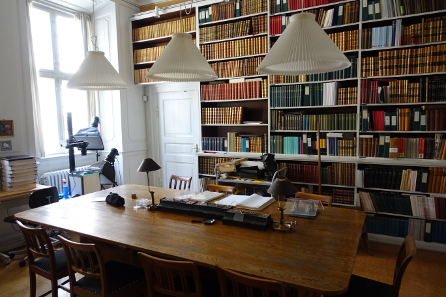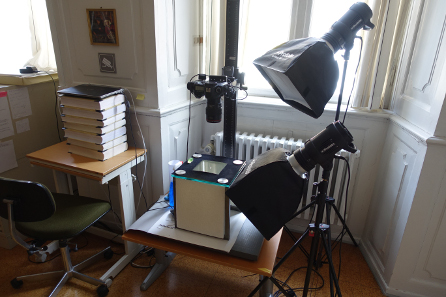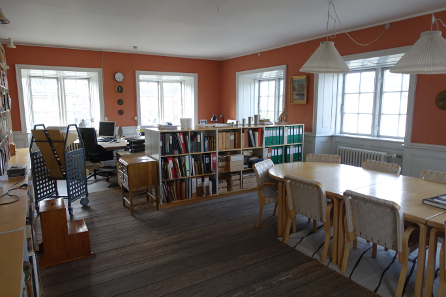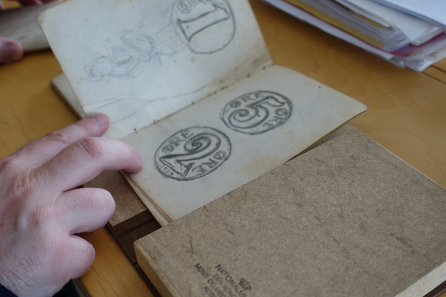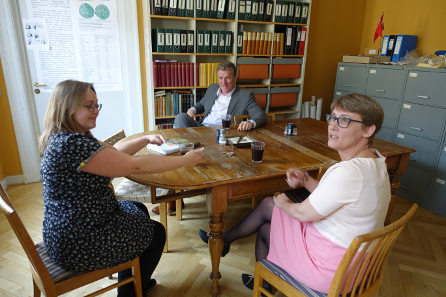by Ursula Kampmann
translated by Annika Backe
June 11, 2015 – Copenhagen is much more than the Little Mermaid and Tivoli. It is a city which match up to every metropolis throughout the world thanks to its museums. The National Museum of Denmark houses treasures like the Trundholm Sun Chariot and the enigmatic Gundestrup Cauldron, the Thorvaldsen Museum as the world’s first museum devoted to one single artist, and the Ny Carlsberg Glyptotek with its outstanding portrait gallery of Roman emperors – in their permanent exhibitions, they all display coins, medals, and orders. Those are not the only places in Copenhagen where something interesting, in terms of numismatics and economic history, can be encountered though.
Here we cast a look at the numismatic side of Copenhagen, visiting the famous Coin Cabinet and its fantastic collection.
Great Hall of the National Museum of Denmark. Photo: UK.
It is enormous, the National Museum of Denmark. The best thing is: there is no ticket counter at the entrance because the Danes have their own attitude towards their cultural heritage. They do not consider it their exclusive property but heritage of mankind which is entrusted to them yet accessible to humanity as a whole, says Dr Michael Märcher, ‘curator, post. doc.’ in the department Antiquity, Middle Ages, Renaissance, and Numismatics who will open the doors of the Coin Cabinet for us.
The Coin Cabinet: entrance through the back door. Photo: UK.
As the entire National Museum, the Coin Cabinet harks back to the Royal Danish Art Chamber that was founded around the middle of the 17th century. Back then, collecting was considered an expression of highest culture. It took an impressive collection for a king to distinguish himself. That collection of course included coins and medals ranging from ancient to modern times.
Cabinets to store coins at Rosenborg Castle. Source: National Museum of Denmark.
How coins were presented to the broad public can be seen on a copperplate engraving from the catalog Description of Danish Coins and Medals published in 1791. By that time, the Coin Cabinet had already emancipated itself from the Art Chamber. It had become an institution in its own right, with its own curator, by royal decree from March 28, 1781.
Cover of the publication commemorating the bicentennial. Source: National Museum of Denmark.
Curator became a promising young archaeologist called Georg Zoega, who was granted a fully paid stay in Rome first of all, to really work his way into numismatics. Zoega was never to return from Rome again, though he stayed connected with Copenhagen and kept providing the Royal Coin Cabinet with interesting collections, such as the Bondacca Collection comprising 11,000 coins.
Christian Jürgensen Thomsen (1788-1865). Photo: UK.
In 1816, the great Christian Jürgensen Thomsen was appointed head of the Antiquarian Collections which later developed into the National Museum of Denmark. Thomsen’s name still rings a bell with every student of Pre- and Early History since he was the first to establish a division of Prehistory into Stone Age, Bronze Age and Iron Age.
A devoted coin collector himself, Thomsen likewise worked in the Coin Cabinet from 1832 onwards and became its director from 1842 until 1865. In this capacity he wrote, among others, the first treatise on gold bracteates of the Migration period.
View into the first permanent numismatic exhibition in the Prince’s Palais. Source: National Museum of Denmark.
In the 19th century, the National Museum of Denmark moved to the so-called Prince’s Palais. In 1892, it was complemented by the Coin Cabinet. There, it is located until the present day. Both the curators’ offices and the permanent exhibition are still at the very same place.
Entrance to the permanent exhibition of the Royal Collection of Coins and Medals – unfortunately, closed. Photo: UK.
It is all the sadder that the permanent exhibition of the Coin Cabinet is now closed. Well, even the curators admit that it no longer conformed to the latest developments in exhibition technology but there are currently plans for a redesign and reopening although
no date has been fixed as of yet. Let us hope that it will be reopened in the not too distant future because the treasures of the Coin Cabinet are simply stunning.
View onto a random coin tray from the great treasure vault. Photo: UK.
Naturally, the Danish coins and medals figure prominently in the collection.
Probably one of the most famous objects of the Coin Cabinet: eepresentational medal of 360 ducats, struck in 1677, of Christian V in celebration of his victories at sea. Photo: National Museum of Denmark, John Lee.
One of the most famous objects is the incredible gold representational medal, designed by Christoph Schneider by order of King Christian V. It is the largest struck medal ever. It was issued in celebration of three naval victories, between 1676 and 1677.
Off-metal strike of the medal in silver. Photo: National Museum of Denmark.
Even more astonishing is that the Coin Cabinet also houses a silver off-metal strike which exhibits interesting traces of die wear. On the obverse, which was struck from the obverse die, you see two raised lines which are indicative of die cracks.
Original medal dies. Photo: National Museum of Denmark.
With the Coin Cabinet further possessing the original dies, we see that the obverse die, in the process of minting, must have cracked in two places. Those cracks allow us to establish a chronology for the minting, hence determine which coin had been struck earlier, from the still intact die, and which coin was made later when the die was already cracking.
View onto a tray with Greek coins from Crete. Photo: UK.
No need to say that Copenhagen possesses a vast collection of Greek coins, in the light that this series, which started in 1942, is the only SNG project ever finalized. Everybody dealing with Greek coins comes across the abbreviation ‘SNG Cop’ eventually. It refers to the 43 weighty tomes of the Sylloge Nummorum Graecorum, containing descriptions of roughly 25,000 coins.
Coin finds. Photo: UK.
This is but a small part of the work. You see, the National Museum of Denmark is the center for all coins recently found in Denmark. This is where they are identified, scientifically documented and stored. This is a great deal of work considering that about 3,000 pre-1537 coins are found every year.
In Denmark, searching for coins with a metal detector is not illegal, and many amateurs pursue this thrilling hobby. In theory, Danish law considers all coins found property of the state. In practice, however, things are different. With so many coins being found, most finders are given back their coins after registration. Only the hoard finds and coins struck prior to 1537 are withheld. The finder will get a reward, exempted from tax, in return. The amount of that finder’s reward is determined in relation to the item’s size and economic value as well as how well the finder co-operates with the authorities (in the past as in the present).
Every newly found coin is kept in a paper sachet with inventory number and short description written on it. Photo: UK.
At any rate, the Danish numismatists deserve great credit for establishing a relationship of trust with the detectorists, thus providing Danish numismatic research with an increase in terms of material and knowledge likely to make other coin find researchers go green with envy.
Records of coin finds, dating back as far as the 18th century. Photo: UK.
At least as envious one could be of the Danish meticulousness with which all coin finds handed in at the Coin Cabinet since 1801 were recorded.
Hoard find with more than 6,000 specimens from January 1832. Photo: UK.
The recording was not done summarily, as elsewhere, but rather accounted for the different coin types of a particular hoard. Although a part was given to other cabinets in exchange –likewise thoroughly recorded – today’s researchers can still work with this hoard inventories.
The precious object registers. Photo: UK.
These object registers belong to the great treasures of the Danish Coin Cabinet.
The most important numismatic library in the North. Photo: UK.
Another treasure of research is the library which is kept up-to-date thanks to the support of the Society of Friends of the Coin Collection. Colleagues from Norway and Sweden confirm that they love to come to Copenhagen from time to time because there they find books which their national libraries are lacking.
Visitor’s room. Photo: UK.
As the coins, those books can be studied in the visitor’s room upon prior appointment.
This is where the pictures are made that are available on the internet free of charge. Photo: UK.
Here, in this room, the photo equipment is installed. This is where the coin images are made which will be available in a huge database on the internet. In respect of its images, the National Museum of Denmark has its own policy. They do not need to yield a profit, but should be available, free of charge, to all people throughout the world.
If you visit the website of the National Museum of Denmark and accesss “Online collection”, you will be directed to a – albeit unstructured – collection of more than 50,000 images, 1,250 of which come from the collections of coins and medals. The number of entries will dramatically increase quite soon. There are 8,000 pictures already taken. They only have to be uploaded now. Another 10 to 15,000 images are planned to be added to the database every year.
What remains to be done is programming the search engine. Otherwise, it would be quite difficult to find the right picture in that flood of images.
The most beautiful office in the entire National Museum of Denmark… Photo: UK.
The Coin Cabinet is proud of its comparatively spacious offices, …
… with a superb view. Photo: UK.
… some of them with a superb view.
none
An unpublished manuscript of numismatic content. Photo: UK.
The numismatic manuscripts that have never been published are likewise stored in this room.
Coffee table, from left to right Dr Gitte Tarnow Ingvardson, Lund / Sweden; Dr Helle W. Horsnæs, National Museum of Denmark; Dr Svein Gullbekk, Oslo / Norway. Photo: UK.
The real focal point of the Coin Cabinet – as everywhere else – is the coffee table where it is likewise about numismatics most of the time.
Dr Michael Märcher in his office. Photo: KW.
CoinsWeekly cordially thanks Michael Märcher for giving us the chance to look behind the scenes of the Coin Cabinet Copenhagen.
We promise to give a detailed report as soon as the permanent numismatic exhibition opens its doors again.
In an upcoming episode we will show you that, despite the permanent exhibition being closed, the National Museum of Denmark offers quite a number of objects of numismatic interest. Like, for example, the largest hoard ever found in Denmark, consisting of 81,000 (sic!) coins. And we have fascinating stories to tell, as the one of the counterfeiter who stole gold drinking horns from the museum to melt them down.
To view the English version of the National Museum of Denmark’s website, please click here.
Information for tourists are not only available in Russian and Chinese but in German as well.
Eat like a Viking in the museum restaurant.
Here you can find the different digital collections.
A little movie with many images of the National Museum of Denmark can be watched here.




